
Three U.S. senators have called for a congressional probe on safety issues at the nation’s aging nuclear plants following a pair of new exposés. In a special series called “Aging Nukes,” the Associated Press revealed that the U.S. Nuclear Regulatory Commission and the nuclear power industry have been working in tandem to weaken safety standards to keep aging reactors within the rules. Just last year, the NRC weakened the safety margin for acceptable radiation damage to reactor vessels. The AP report also revealed radioactive tritium has leaked from 48 of the 65 U.S. commercial nuclear power sites, often into groundwater from corroded, buried piping. Leaks from at least 37 of those facilities contained concentrations exceeding the federal drinking water standard—sometimes at hundreds of times the limit. We speak with AP investigative journalist Jeff Donn. [includes rush transcript]
Transcript
JUAN GONZALEZ: Three U.S. senators called for a congressional probe on Thursday on safety issues at the nation’s aging nuclear plants. The request from Democratic senators Barbara Boxer of California, Sheldon Whitehouse of Rhode Island, and independent Bernard Sanders of Vermont comes following a pair of new exposés by the Associated Press. In a special series called “Aging Nukes,” the AP revealed that the U.S. Nuclear Regulatory Commission and the nuclear power industry have been working in tandem to weaken safety standards to keep aging reactors within the rules. Just last year, the Nuclear Regulatory Commission weakened the safety margin for acceptable radiation damage to reactor vessels.
AMY GOODMAN: The AP report also revealed radioactive tritium has leaked from 48 of the 65 U.S. commercial nuclear power sites, often into groundwater from corroded, buried piping. Leaks from at least 37 of those facilities contained concentrations exceeding the federal drinking water standard, sometimes hundreds of times the limit.
We’re joined now from Boston by Jeff Donn, who wrote the exposés for the Associated Press, the national writer for the AP and member of the AP investigative team.
Jeff, welcome to Democracy Now! Why don’t you lay out your exposés one at a time, what you found in light of what happened in Fukushima, what we’re dealing with here in this country?
JEFF DONN: Well, there are two big ideas. One is that, as you summarized, the nuclear industry and their government regulators have been working together to lower safety standards as aging nuclear systems and parts and plants come close to violating those standards and those rules. And that’s been a pattern for decades now, and we’re seeing a lot of it as these plants get older and older.
The other big idea here is that the plants have had piping buried underneath, underground, covered underground for so long the piping can’t be properly inspected. It’s rarely looked at carefully, visually. It’s rarely dug up. And it’s been so long now that a lot of that is corroding, and you have leaks, that we’ve documented, at three-quarters of the sites. And in fact, a Government Accountability Office, the congressional investigative arm, released—had a report released a day or two ago after our series, and in that they say the Nuclear Regulatory Commission, the federal regulators say, you know what? There have been either leaks or spills—presumably many related to aging, some not, but radioactive leaks or spills—of tritium and other radionuclides at all the plants.
JUAN GONZALEZ: Well, Jeff, the picture that you paint here, especially when you describe what’s happening at some of these plants, is really—it’s amazing, the extent of, in essence, the cracks, the corrosion. How exactly do they weaken the standards when they discover some of these problems at particular plants?
JEFF DONN: Well, what they do first is that the industry comes to government, typically—this is the pattern you see—or sometimes government comes to industry and says, “We’ve got all these parts or systems that are coming close to the standard, even sometimes violating the standard. What do we do about it?” And so, they set off on a round of research—and the government does some of the research, the industry does some of the research—and they find, again and again, that the standards can be lowered. The operative phrase that you hear and you read again and again is that “the standards were overly conservative.” So then they find justification to lower those standards, and suddenly a group of parts or systems that were coming close to violating rules, or do violate the rules, are back within the rules. The other half of it is that the regulators sometimes can’t get the systems and parts back within the rules, so then they begin issuing waivers or amendments or special exceptions that still allow the nuclear plants to keep running.
AMY GOODMAN: I just want to go back to the tritium water. Explain the dangers of this and how this is possible all over this country and what exactly it means and what can be done to stem the leaks. I mean, you have Vermont. They are poised to shut down their plant.
JEFF DONN: Yeah, that’s a very good question, and it’s a little bit confusing to people, I think. Tritium itself, at the levels that it’s been released, is probably not a great health threat. It doesn’t penetrate the skin very well. It’s not like the gamma radiation that people were talking about in Japan. The main danger from tritium, the main health danger, is if you were to drink it. The EPA sets a limit for how much can be in drinking water. None of the leaks have entered drinking water in amounts that would violate the EPA limit so far.
Part of the problem—and the GAO report I was just talking about points this out—part of the problem is that the industry and the regulators don’t really have a good handle on what’s happening in those pipes and vaults and all that equipment under the ground, that they don’t have technologies that really allow them to see that very well. So, the GAO report says we don’t really know about how bad the leaks are. That’s one part of the problem. Another part—that’s a part that bears on public health.
Another part is that it raises questions about the integrity of the plants, about the integrity of their cooling systems. Some, not all, but some of this piping carries water that’s used to cool the reactors. And in an emergency, as we saw in Japan, you desperately need that water to cool the reactors, because the radiation produces a lot of heat, and you’ve got to keep it cool. So, that’s the other half of the problem: what do all these leaks say about the integrity of that piping and, even in a broader sense, about the integrity of a lot of parts that can’t easily be seen in nuclear power plants, like all those miles of electrical cable underneath the power plants that are needed by the operators to see what’s going on in the plant?
JUAN GONZALEZ: And Jeff—
JEFF DONN: So it raises a lot of questions that trouble engineers.
JUAN GONZALEZ: Jeff, doesn’t the presence of tritium also indicate that probably other radioactive materials like strontium or cesium might also be getting—leaking from these plants?
JEFF DONN: It does, because tritium—that’s a radioactive form of hydrogen, by the way, and that’s why it gets into water, H20. It does. Tritium moves through the soil more readily than some of those other radioactive substances, so it’s often—you often see it first. And then, there are lots of cases where you see other more powerful radioactive substances that do more health harm, in equal amounts, after you see the tritium. That’s—you’re right. That’s part of why the tritium is a concern.
AMY GOODMAN: Can you name names of plants? For example, let’s talk New York. What’s outside of New York City, of tens of millions of people, the plant and where it stands today?
JEFF DONN: Well, they’ve had—there are so many problems that it’s hard to enumerate them all. But, for example, they’ve had radioactive leaks from the spent fuel pools at Indian Point—the spent fuel pool. The spent fuel pool is where they keep the radioactive fuel after they’ve used it in the reactor, and that fuel remains thermally hot and radioactive for years to come, so you have to keep it cool, just like the fuel in the reactor. And they’ve had leakage from that spent fuel pool at Indian Point, which is about 25 miles north of New York City. And we know how important the spent fuel pools are in a different context in Japan, at the Fukushima Daiichi plant, because a lot of the radioactive—radioactivity that was released in the air there was from the spent fuel pool. So, there’s been a lot of focus on the spent fuel pools recently. And even the chairman of the Nuclear Regulatory Commission, Gregory Jaczko, has hinted recently that maybe we do need to look at the spent fuel pools in the United States and how securely we’re keeping the spent fuel.
AMY GOODMAN: And what about evacuation plans, I mean, at places like Indian Point? And you can go around the country.
JEFF DONN: Well, that’s something that we’ll be saying more about on Monday, in a story that’s coming out on Monday. And I don’t want to get ahead of my employer, but I can tell you that we’ll be—we’ll have a lot to say about how much population growth there has been around the 65 nuclear—commercial nuclear power sites in the United States over last 30 years—we did a historical mapping analysis with mapping software—and where the evacuation plans that communities must make for evacuation, if it’s necessary around the plants, where they have weaknesses and where they haven’t kept up to date with the population growth.
JUAN GONZALEZ: Jeff, your articles also talk about the problems with the reactor vessels that enclose the reactors and that you found major problems, as well, there, in the documents that you obtained, the monitoring documents that you obtained from the government?
JEFF DONN: Yeah, it’s real interesting. One of the biggest areas of aging difficulties has been in so-called embrittlement of the steel around the reactors. And what that means is that if you bombard something with neutrons from a chain reaction, like the one that goes on inside these reactors, if you bombard steel with neutrons for years and years, it gets more brittle. And as it gets more brittle, like, say, a reed from the beach that maybe you brought home and it gets brittle, when it undergoes a force, it’s more likely to suddenly shatter, to break. And the reactor vessels are like that. The vessels are these gigantic steel tubs that surround the chain reaction, the radioactive fuel, and they provide a shield from it, and they hold it. They keep the area around it safe. And so, over the years, they’ve got increasingly brittle. There was even one reactor in the early 1990s, the Yankee Rowe reactor in western Massachusetts, that had to be closed largely because of concerns about its vessel getting brittle.
And as—fairly early on, actually, in the industry’s history, government and regulators started to notice that reactors were approaching the embrittlement standard for the vessels, and in some cases even violating that standard. And instead of saying, “OK, what can we do to get the reactors back within the standard? Is it possible to do a process called annealing, that would make them less brittle? Is it possible to replace them?” what the industry and the government did is they launched another round of research and decided, “You know what? We can back off a little bit on the standard and allow the vessels to become more brittle.” And that’s continued. There was a second round of this, that’s taken years, that just culminated in the last year or two, where they raised that safety standard again. Again, the same pattern, saying, “We didn’t need to be so strict.” In other words, “We didn’t need to be so safe. It’s safe enough.” Because the government and industry argue that, for all the changes, the reactors still remain safe—maybe not as safe as they were before, but plenty safe. That would be their argument.
AMY GOODMAN: Well, we’re going to leave it there, Jeff Donn, national writer for the Associated Press, member of the AP investigative team, has done this series, “Aging Nukes.” We will continue to report on what you’re doing. Thanks so much, Jeff, for reporting to us from Boston.

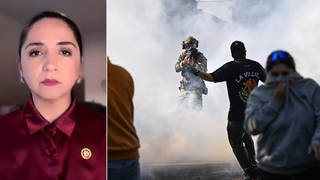
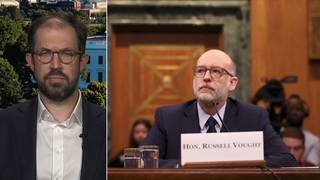
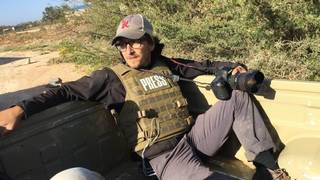
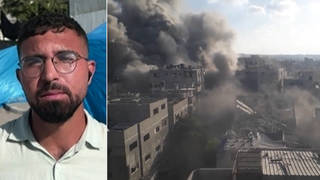





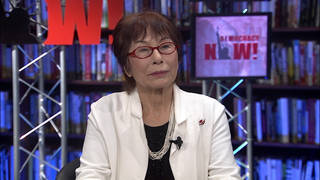

Media Options